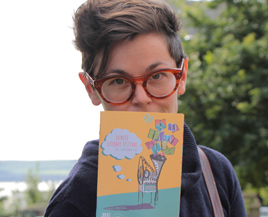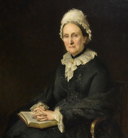
-
Celebrations begin to commemorate 50 years of the University of Dundee
2017 -
The University of Dundee becomes a fully independent institution under the terms of the Royal Charter.
1967 -
Ordinances issued in 1897 made University College form part of St Andrews. and establish a Faculty of Medicine.
1897 -
The Deed formally creating University College Dundee was signed by founders Miss Mary Ann Baxter and her cousin Dr John Boyd Baxter.
1881
Midwifery
-
date
Fri, 18 Aug 2017
-
Running Time
00:04:29
Before the creation of the NHS, healthcare providers often struggled to give adequate support to the most vulnerable in society.
Episode Transcript
Before the creation of the NHS, healthcare providers often struggled to give adequate support to the most vulnerable in society. In Dundee, the number of deaths attributable to infectious disease had reduced following the Public Health (Scotland) Act of 1867. However, even as late as 1912, one statistic was disturbingly high. The infant mortality rate, that is the number of deaths under one year of age for every 1000 births, was still 159. Social reformer Mary Lily Walker was central to the formation of the Dundee Social Union in 1888, which worked to tackle housing and health issues in the city. In this she enlisted the help of professors at her alma mater of University College, Dundee, and a bank of willing volunteers. The high rates of infant mortality could, of course, be attributed to the conditions in which women were living and working, and how their children were fed.
A dispensary and clinic was established to provide the city's most needy women with access to treatment and medicines at the lowest possible cost, but it was clear that some women, who could never afford the costs of private care, needed access to gynaecological surgery. With Mary Lily Walker driving the project once more, the Dundee Women's Hospital and Nursing Home opened in Seafield Road in 1897 to provide low-cost surgery. It moved to larger premises in Elliot Road around 1915 through donations by the Sharp family of Hill of Tarvit, and in 1948 became part of the new National Health Service before closing in the 1970s.
The Caird Maternity and Gynaecology Wards had opened at Dundee Royal Infirmary in 1899, and were succeeded by the Sharp Maternity building in 1930. The Maryfield Hospital, which had opened to treat the poor, had only one maternity room when it opened in 1893, but developed into a busy maternity and paediatric hospital by the 1960s. These services moved to the new Ninewells Hospital in 1974. The training of nurses and midwives had made great progress over the decades. The Royal College of Nursing had already been established in 1916 by Sarah Swift, who had trained at Dundee Royal Infirmary, receiving her certificate in 1880. And in the 1930s, following the formation of the General Nursing and Midwifery Councils, training schoolswere attached to hospitals. Each school had its own uniforms, training programmes, and badges, with students being employed and housed by the hospital. The training itself was formalised into blocks, alternating instruction at the nursing school with hands-on experience in wards at the hospital.
This system carried on until the mid to late 1960s. The Dundee College of Nursing and Midwifery opened in June 1969, providing instruction for an impressive 500 student and pupil nurses who would work in the general and mental hospitals throughout the area. The Tayside Medical History Museum has a large amount of artefacts including medical instruments, equipment, documentation, and items that give a flavour of nursing in 20thcentury Dundee hospitals.
Today the School of Nursing and Health Sciences offers degrees in mental health nursing, adult nursing, and children's nursing. Postgraduate studies include Midwifery, Maternal and Infant Health, and Infection: Prevention and Control. There are opportunities to specialise across adult and children’s nursing. Research is also a intrinsic part of the School, with many areas of health management and care being carried out to improve outcomes for all ages. Many elements of nursing and midwifery care might have changed, but the intention of the School’s staff and students is the same. To make sure everyone, no matter what they can afford, can access the best possible care.
Peggy Hughes

Peggy manages Literary Dundee, a University of Dundee initiative that celebrates books, reading andwriting. Literary Dundee was included in the List Magazine's Hot 100, their annual celebration of thefigures who've contributed most to the cultural landscape during the year. She has worked for theUniversity since 2013 and before that worked with literary organisations such as the Scottish PoetryLibrary and the Edinburgh UNESCO City of Literature Trust. Peggy works with books in her spare timetoo - interviewing authors at events and festivals, talking about books on the radio and other platforms.She sits on the board of the Craigmillar Literacy Trust and Highlight Arts, and when not reading or talkingabout books, enjoys walks, Scrabble, tweed, singing tunelessly, and cake. Peggy was listed at number 51in the Courier's Impact 100 2016 (their 'annual review of the people who have done the most — good orbad — to affect life in Courier country') for services to Dundee's cultural life.
-
Celebrations begin to commemorate 50 years of the University of Dundee
2017 -
The University of Dundee becomes a fully independent institution under the terms of the Royal Charter.
 1967
1967 -
Ordinances issued in 1897 made University College form part of St Andrews. and establish a Faculty of Medicine.
1897 -
The Deed formally creating University College Dundee was signed by founders Miss Mary Ann Baxter and her cousin Dr John Boyd Baxter.
 1881
1881